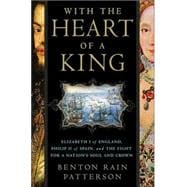
| The Prince | p. 1 |
| The Princess | p. 13 |
| The Preparation for a Crown | p. 29 |
| The Bloody Queen | p. 45 |
| The Suspect Princess | p. 60 |
| The New Spanish King | p. 72 |
| The End of Reign | p. 88 |
| The New Queen | p. 104 |
| The New Proposal | p. 121 |
| The Religious Divide | p. 138 |
| The Catholic Rival | p. 158 |
| The Tragedies and Triumphs | p. 180 |
| The Netherlands Revolt | p. 198 |
| The Hostilities | p. 215 |
| The Preparation for Conquest | p. 231 |
| The Defenders | p. 246 |
| The Grand Armada | p. 260 |
| The Rulers of the Sea | p. 277 |
| The Ruin and the Renewal | p. 298 |
| The Final Defeat | p. 311 |
| Epilogue | p. 317 |
| Notes | p. 321 |
| Bibliography | p. 327 |
| Acknowledgments | p. 331 |
| Index | p. 333 |
| Table of Contents provided by Ingram. All Rights Reserved. |
The New copy of this book will include any supplemental materials advertised. Please check the title of the book to determine if it should include any access cards, study guides, lab manuals, CDs, etc.
The Used, Rental and eBook copies of this book are not guaranteed to include any supplemental materials. Typically, only the book itself is included. This is true even if the title states it includes any access cards, study guides, lab manuals, CDs, etc.
Excerpted from With the Heart of a King: Elizabeth I of England, Philip II of Spain, and the Fight for a Nation's Soul and Crown by Benton Rain Patterson
All rights reserved by the original copyright owners. Excerpts are provided for display purposes only and may not be reproduced, reprinted or distributed without the written permission of the publisher.